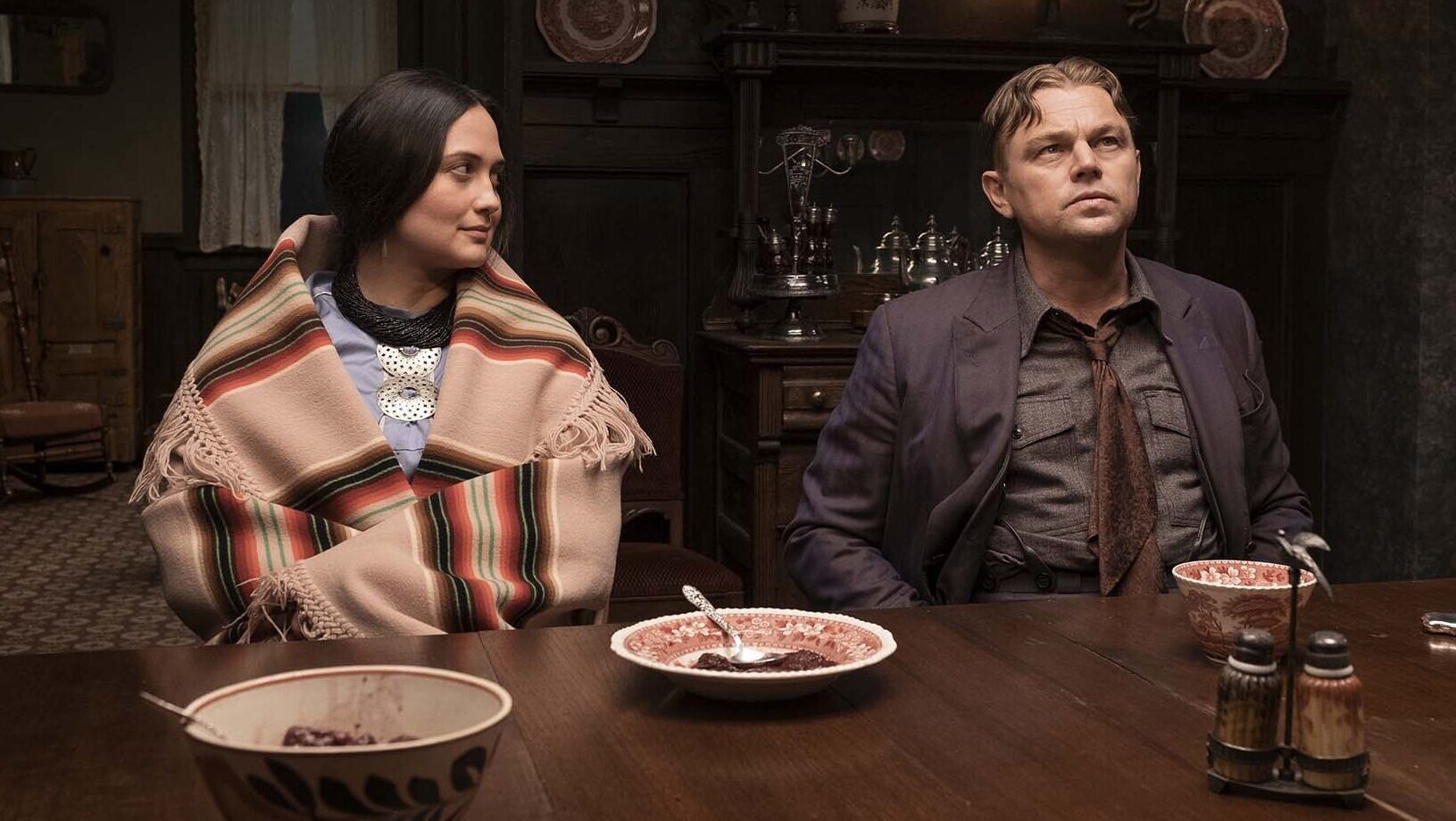
In the 1920s, the people of the Osage nation became the richest community per capita in the world when oil gushed forth from their land in Oklahoma — a location they’d been moved to from Kansas against their will fifty years earlier by the US government. As the Osage spent their newfound millions on luxury cars and other consumer goods, greedy white men moved in with schemes to get their hands on the money and the rights to the oil.
That’s the story told by “Killers Of The Flower Moon,” adapted by Martin Scorsese and Eric Roth from David Grann’s 2017 nonfiction book.
It centers around three characters: William Hale (Robert De Niro), a business mogul who has seemingly befriended the Osage while secretly plotting against them; Ernest Burkhart (Leonardo DiCaprio), Hale’s nephew, who arrives via train naive but is soon central to his uncle’s underhanded ways; and Mollie Kyle (Lily Gladstone), a strong-willed Osage native who falls in love with Ernest yet slowly becomes victim to the viciousness being fomented against her family and community.
Gladstone is a revelation, playing Mollie as stoic, flirty, and wounded. She matches DiCaprio’s intensity in every scene they share, forcing us to keep our eyes on her as she keeps hers on both the good and bad around her. She also helps anchor DiCaprio’s Ernest, who at first comes off as a rube, then becomes an accomplice in the murders of whoever his uncle wants out of the way. De Niro, of course, is a natural at playing the head of a powerful criminal organization, portraying Hale as a cattle rancher with a specific malice while simultaneously speaking to the Osage in their language as if he were their benefactor, not destroyer.
In the hands of Scorsese and his team, “Killers Of The Flower Moon” pops off the screen, never dragging despite its three-and-a-half-hour runtime. The story is compelling, set direction and production design are beautiful, and the soundtrack by the late Robbie Robertson fits perfectly into every scene.
Scorsese had input from modern-day members of the Osage nation to get the details right and cast many indigenous people in addition to Gladstone, including Cara Jade Myers as Mollie’s sister, Anna. The supporting cast also includes Jesse Plemons — whose quiet style makes every movie he appears in better — as an agent from the newly formed Federal Bureau of Investigation who arrives to look into the murders. John Lithgow and Brendan Fraser also have small roles in a climactic court scene.
Despite its 210-minute length, “Killers Of The Flower Moon” can’t tell the full story of the efforts to eradicate of the Osage people. Any other director would have tacked on a half-dozen text-filled screens to tell viewers what happened after the main action of the movie ended. Instead, Scorsese uses the interesting framing device of an old-time radio drama, with actors and narrators relating the further goings-on, complete with an orchestra, live sound effects, and a cameo appearance by the director. It’s a bit jarring at first, but quickly becomes a very effective way to share other aspects of the story. It’s the mark of a veteran filmmaker still coming up with new tricks to tell his tales.
More than just a great movie experience, “Killers Of The Flower Moon” is a masterful lesson in yet another piece of American history I knew nothing about. I give it a 9.5 out of 10.
Opens today in theaters.
